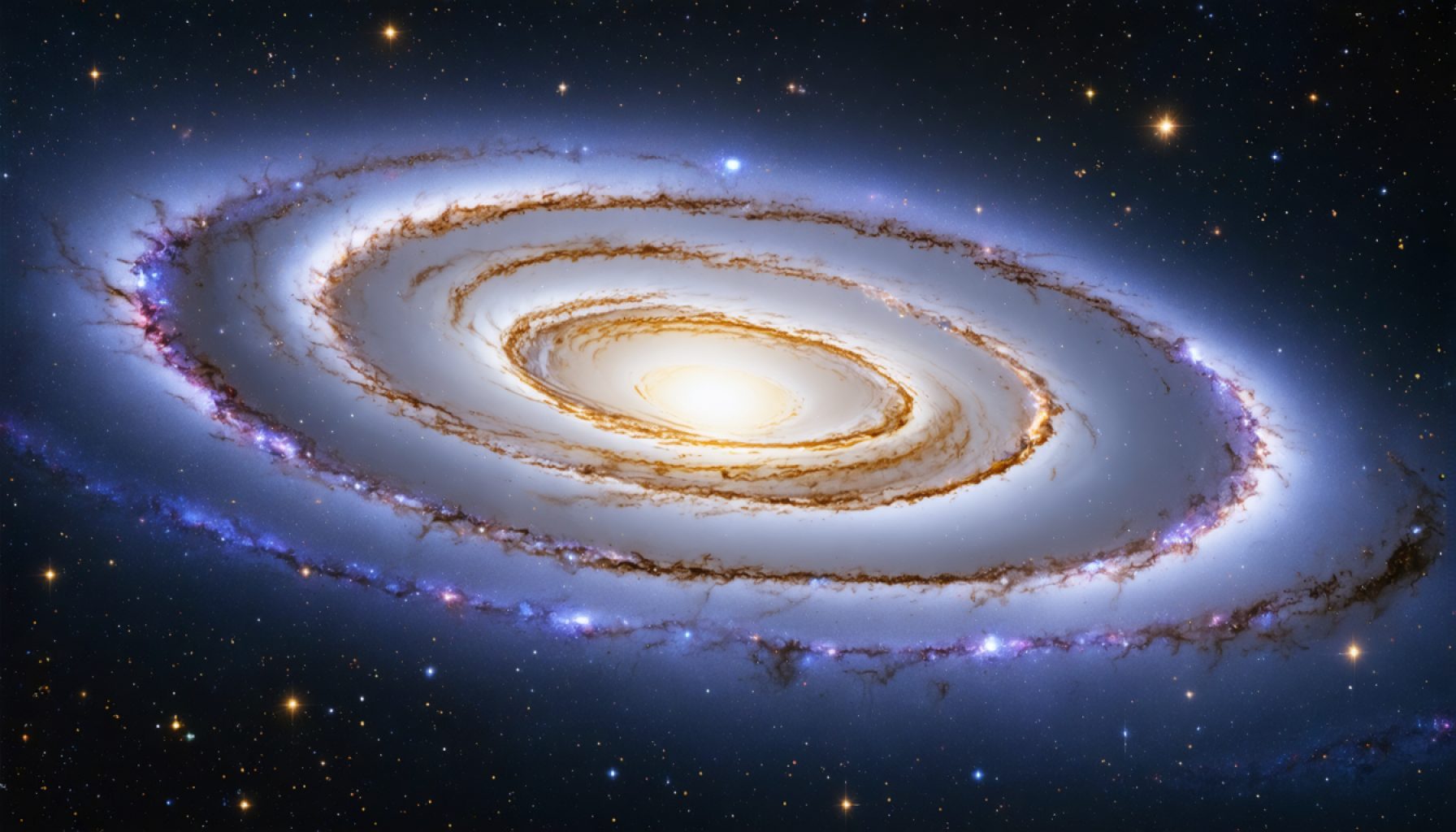- The James Webb Space Telescope has unveiled a spiral galaxy at the tip of Herbig-Haro 49/50, once thought to be a lone star with a halo.
- The Webb Telescope’s superior optics, boasting a mirror 45 times larger than the Spitzer Space Telescope, provide unprecedented clarity and resolution.
- This newly identified galaxy is abundant with stars, featuring active star birth regions and possibly a dense bar indicative of barred-spiral galaxies.
- The discovery underscores humanity’s relentless pursuit of cosmic knowledge and the transformative power of advanced technology.
- This event highlights the potential for chance alignments in space to reveal celestial wonders and deepen our understanding of the universe.
In a dance of light and shadow across the vast canvas of the universe, a decades-old astronomical enigma has finally been unraveled, thanks to the powerful lens of the James Webb Space Telescope. Nestled within the celestial storm of Herbig-Haro 49/50, the secret of a mysterious object, once perceived as a lonely star wrapped in a ghostly halo, has been revealed to be something far grander.
Nearly 20 years after suspense first stirred astronomers’ curiosity, the Webb Telescope’s cutting-edge optics have transformed the cosmos from a blurry haze into a masterpiece of clarity, peeling back the universe’s layers to expose a spiral galaxy standing sentinel at the very tip of the cosmic “tornado.” Unlike its predecessor, the Spitzer Space Telescope, which first glimpsed this phantom in 2006, Webb boasts a mirror 45 times larger, capturing light with an unprecedented prowess and transforming it into images with unparalleled resolution.
This galaxy, a serendipitous visitor in the line of sight of HH 49/50, is no desolate place; it teems with billions of stars, sprawling across spiral arms that hint at marvels contained within. A bloom of reddish clumps scattered through these arms signifies active regions of star birth, while the blue-tinted bulge at its core whispers of ancient stars residing in the galaxy’s heart. There even lies a suggestion that these spiral arms wrap around a dense bar of stars, a hallmark of barred-spiral galaxies, lending the cosmic intruder an identity rich with history and intrigue.
This revelation is a triumph not just for Webb but for humanity’s unyielding pursuit of knowledge, showcasing how technology’s relentless march forward equips us to unravel the universe’s many secrets. As the Webb Telescope continues its exploration, each new image might transform the cosmic unknown into another gallery of wonders, bringing the distant reaches of the universe closer to our curious minds.
The Webb’s discovery serves as a reminder: in the shadowy depths of space, chance alignments create cosmic spectacles, lifting the veil on the mysteries of the universe and inviting us to ponder our place within it. The narrative of this newfound galaxy reinforces a simple truth — that our quest for understanding is boundless, much like the very universe we seek to comprehend.
The James Webb Space Telescope Unveils a Spiral Galaxy Beyond Herbig-Haro 49/50
Introduction
The James Webb Space Telescope has transformed our understanding of a once-mysterious object enshrouded in the Herbig-Haro 49/50 region. Originally thought to be a single star, the Webb Telescope’s unprecedented capabilities have disclosed a spiral galaxy beyond, capturing the imaginations of astronomers and the public alike.
Key Discoveries
– Reimagining Cosmic Phenomena: What once seemed to be a lone star is now revealed as a spiral galaxy, with sprawling arms and a bustling stellar nursery. This discovery emphasizes the transformative power of advanced telescopic technology in redefining our cosmic neighborhood.
– Technological Marvel: Compared to its predecessor, the Spitzer Space Telescope, Webb boasts a mirror 45 times larger. This allows it to capture faint cosmic light with remarkable clarity, turning enigmatic observations into definitive discoveries.
– Dynamic Galaxy: The newfound galaxy showcases bright red clumps within its spiral arms, indicating ongoing star formation. Meanwhile, its central bulge suggests a dense concentration of older stars, potentially housed within a barred structure typical of barred-spiral galaxies.
How to Leverage Webb’s Insights
– For Astronomy Enthusiasts: Stay updated with the latest images and discoveries from the James Webb Space Telescope by following reputable space research organizations like NASA. These images can inspire and inform future studies and public interest.
– For Educators: Integrate these discoveries into educational materials. Use Webb’s findings to explain core astronomical concepts such as galaxy formation, star birth, and the importance of advanced technology in space exploration.
Future Implications
– Market Forecasts & Industry Trends: The success of the James Webb Space Telescope might drive increased investment in space-based research and computational astrophysics. As technology continues advancing, more sophisticated telescopes could follow Webb, continuing to peel back the layers of cosmic mystery.
– Exploration and Research: The Webb Telescope’s success may inspire future missions targeting specific celestial phenomena, potentially altering our understanding of galactic evolution and the universe’s structure.
Potential Limitations
– Cosmic Alignments: While Webb has increased our ability to see in greater detail, much of what we observe is due to cosmic chance alignments. The serendipitous placement of objects in space could influence interpretations and may necessitate further investigation.
Actionable Recommendations
– Engage with Astronomy: Participate in community stargazing events and follow space agencies online to stay connected with ongoing discoveries. Engaging directly with astronomical findings can deepen your appreciation and understanding of the cosmos.
– Investment in Education: Support initiatives that promote STEM education. Preparing the next generation of scientists is crucial for the continued exploration and understanding of space.
Conclusion
The James Webb Space Telescope continues to shine a light on the vast and shadowy depths of the universe, with every discovery reiterating our limitless curiosity and the boundless nature of space. As Webb continues its mission, it will undoubtedly uncover new wonders that challenge and expand our understanding of the universe.
For further exploration of space discoveries, visit NASA and explore their extensive resources and updates on astronomical research.
